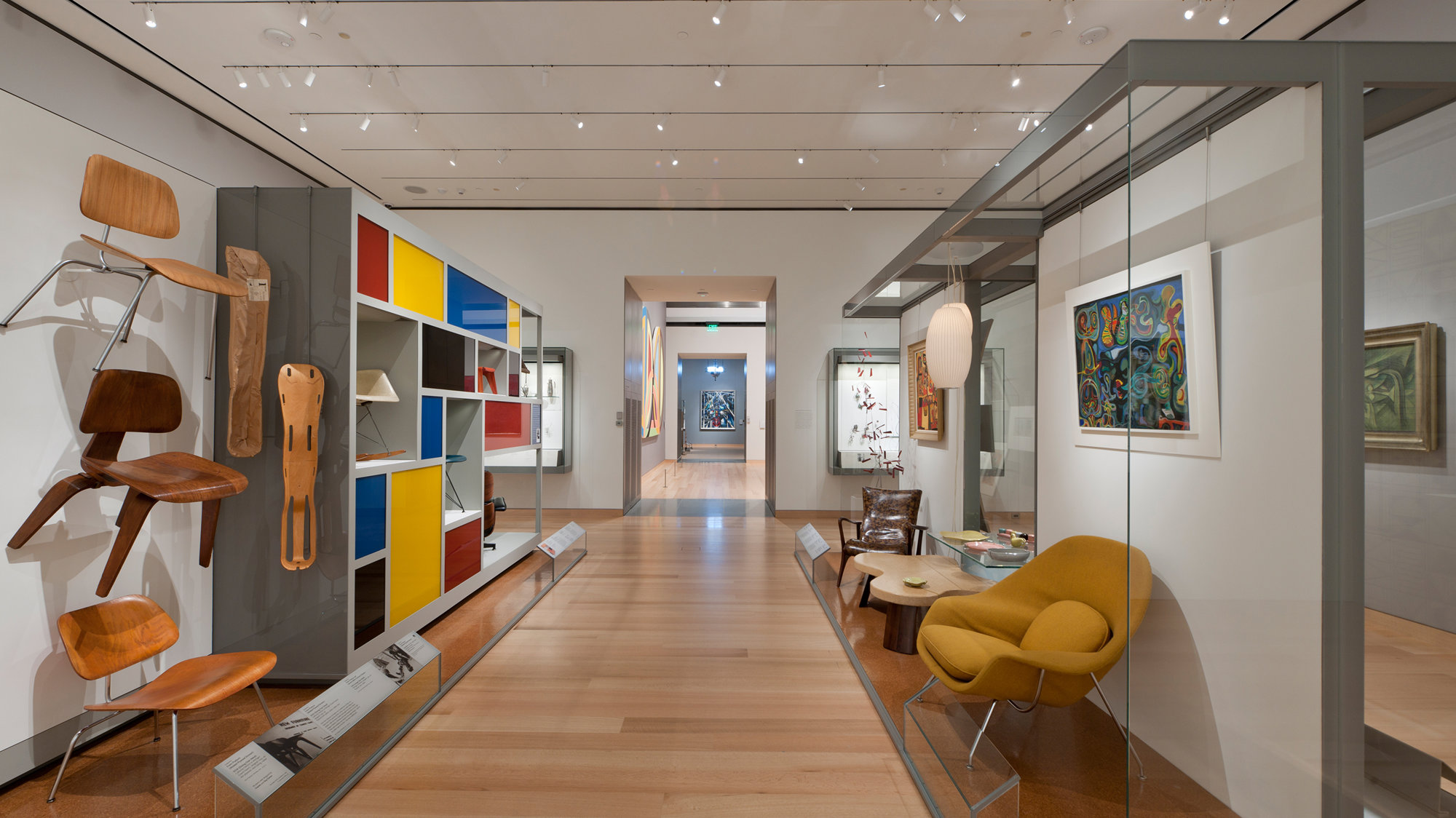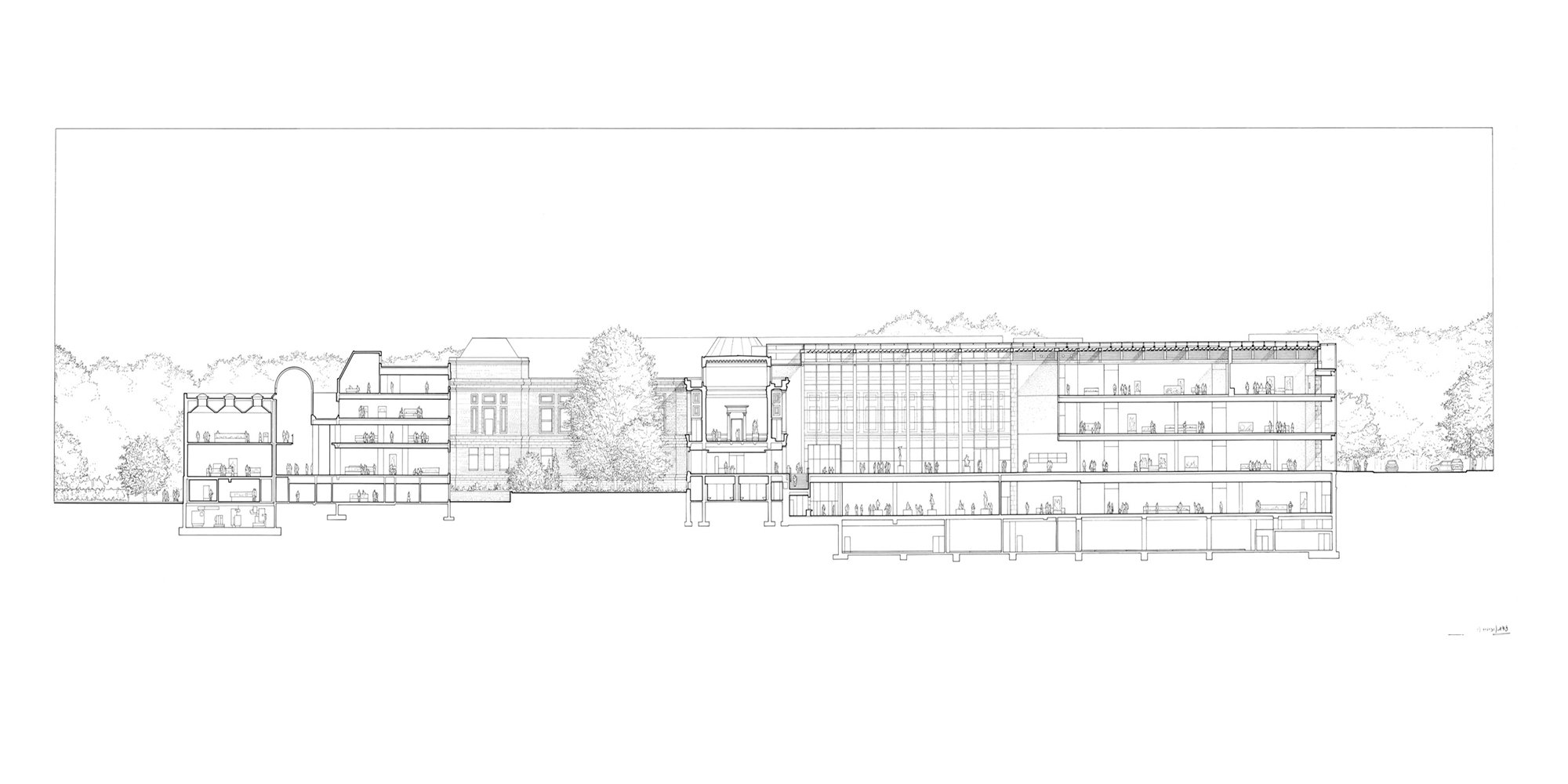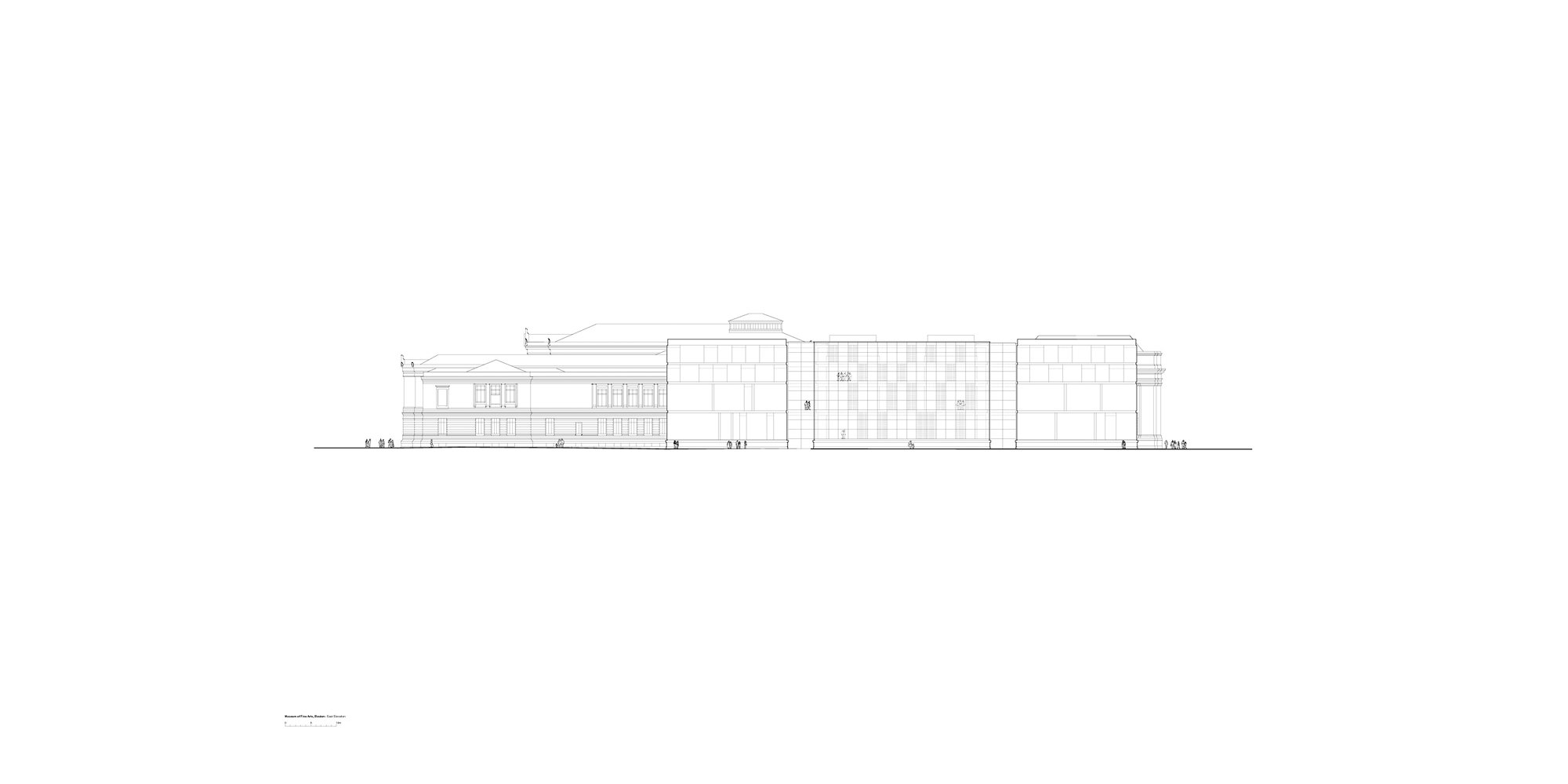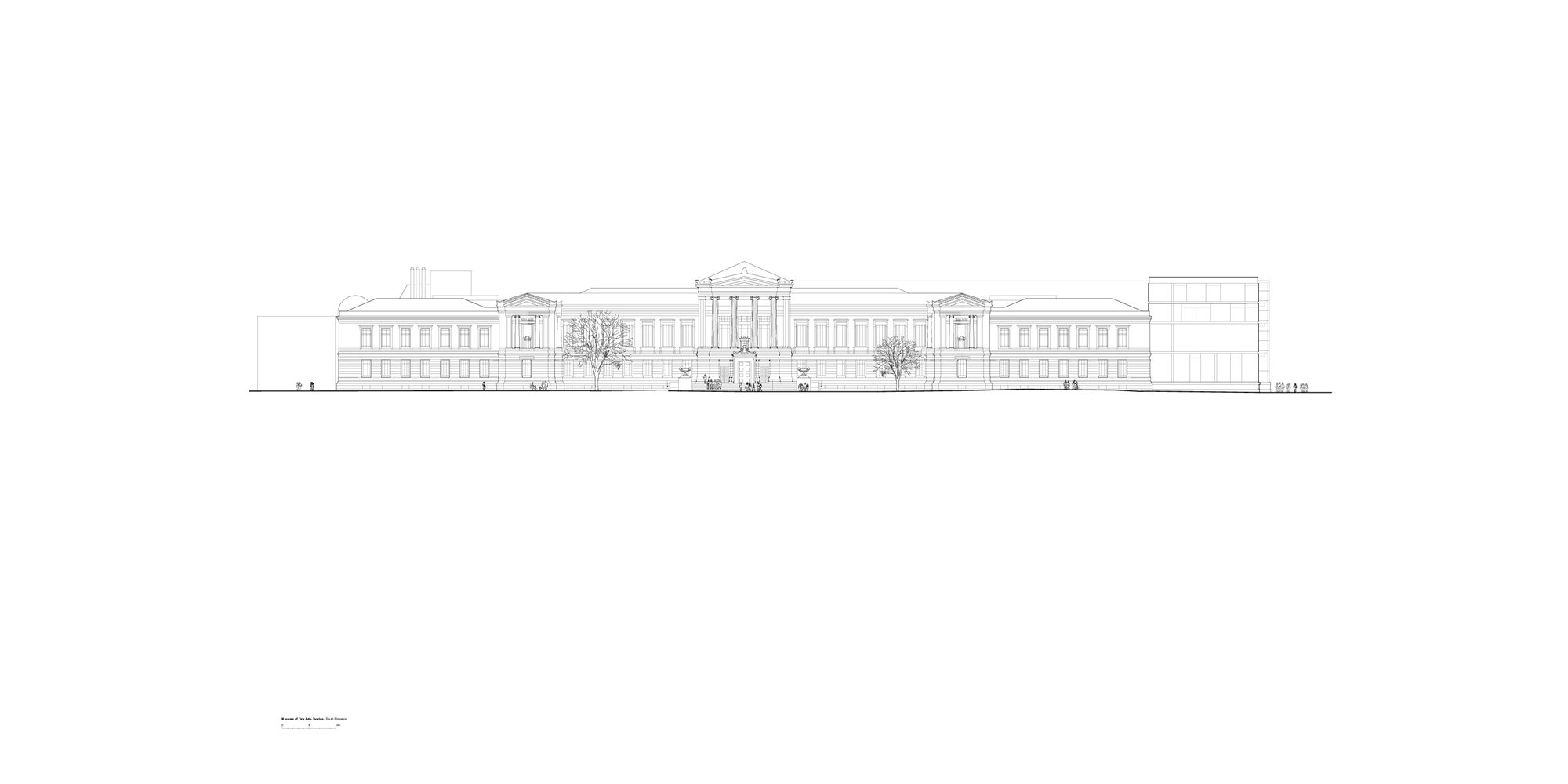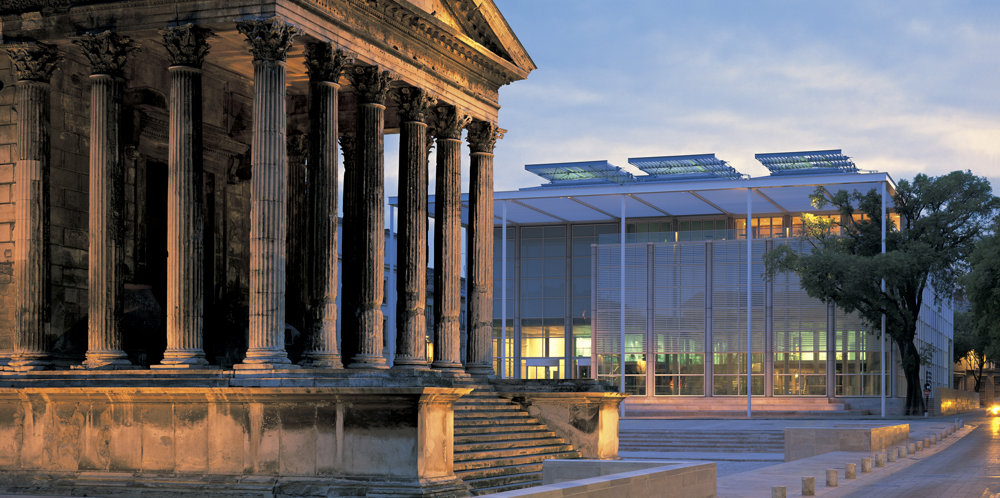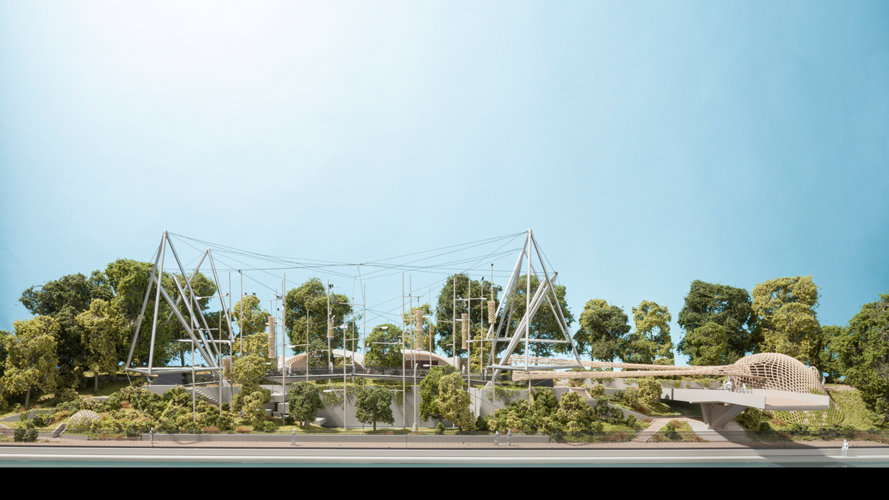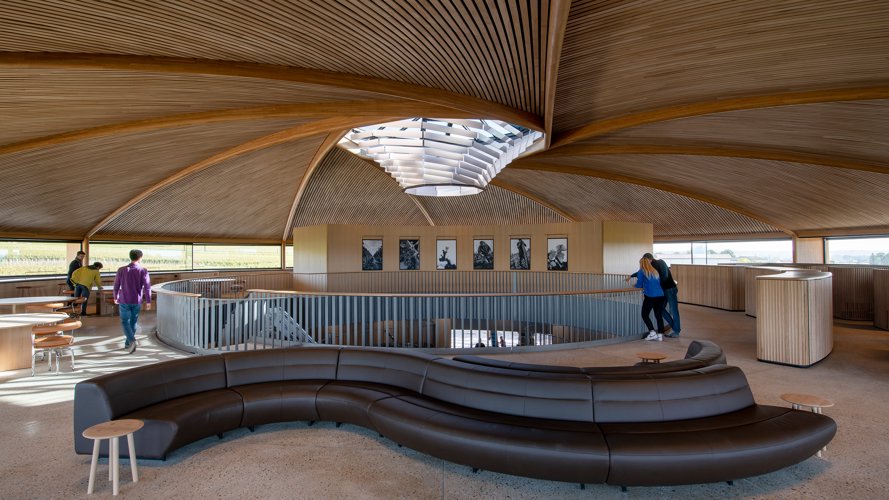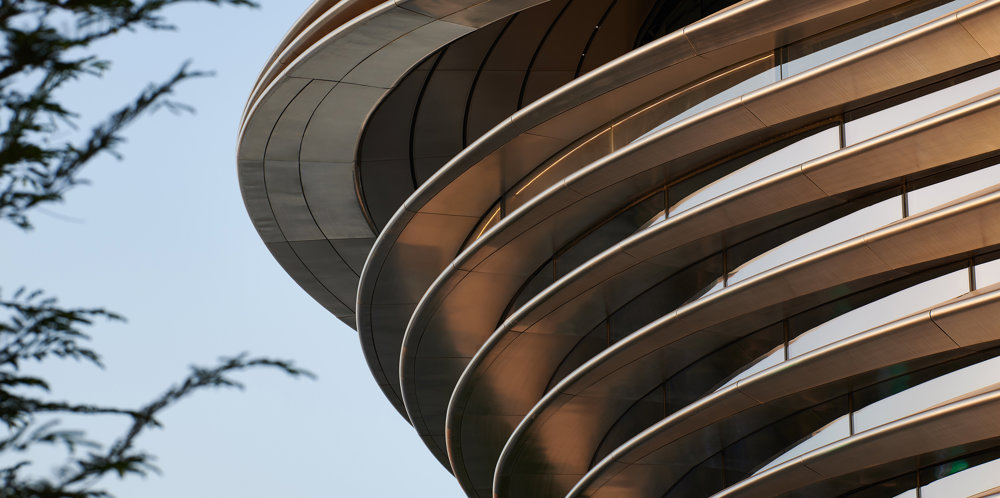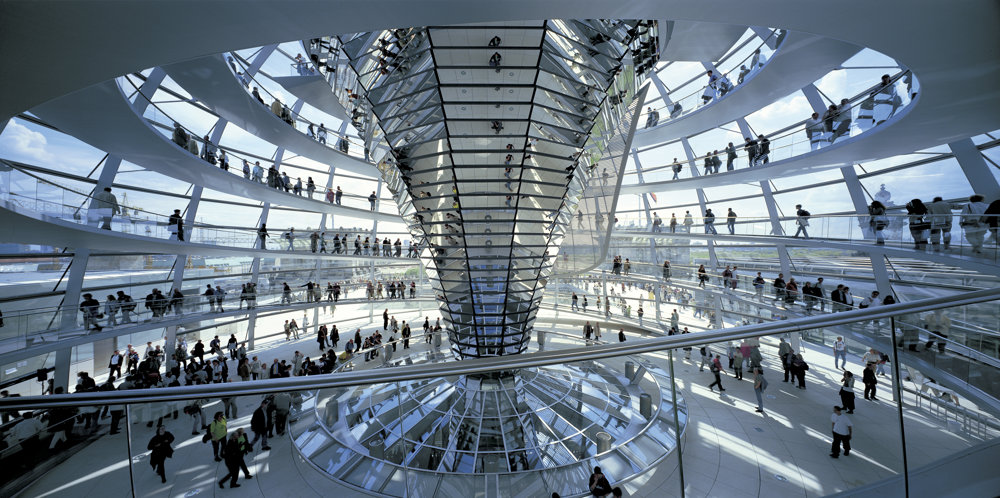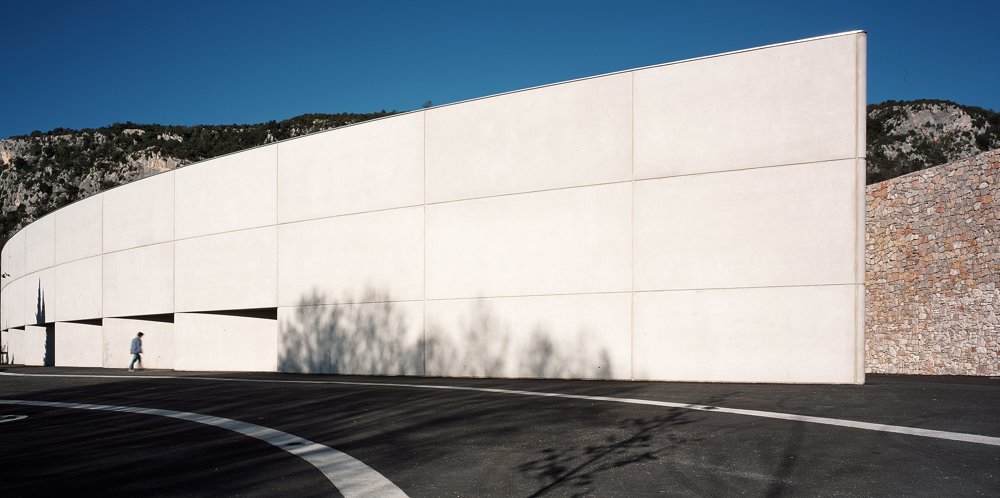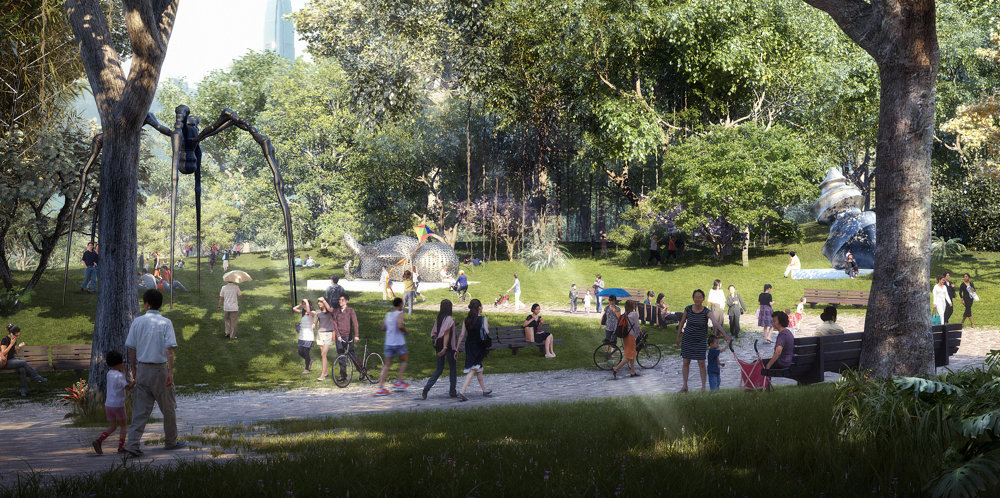Founded in 1870, the Museum of Fine Arts, Boston is one of the largest art museums in the United States and among the world’s finest, visited by more than one million people every year. However, in common with many such institutions, over time the scale of the audience placed a great strain on its facilities. This retrofit project echoes themes explored in the Reichstag and the Great Court at the British Museum, combining elements of old and new and strengthening links with the community by making the museum building more open and accessible.
At the core of the masterplan for the museum is the restoration of the logic of the building’s Beaux-Arts plan, devised by the architect Guy Lowell in 1907. The central axis has been reasserted with the reintroduction of the principal entrance to the south on Huntington Avenue and the reopening of that to the north. At the heart of this axis is a new information centre, from where visitors begin their tour of the galleries. A freestanding glazed structure – ‘a crystal spine’ – has been inserted between the building’s two main volumes to create the Art of the Americas Wing. Arranged over four floors, and providing fifty-three galleries this new wing has increased the museum’s exhibition space significantly, enabling some 5,000 works from the collection to be placed on permanent display. Where the crystal spine meets the central axis, it partly encloses an existing courtyard in a glass ‘jewel box’. This creates spaces for visitor orientation and a café, with a new gallery for special exhibitions beneath.
Designed to be highly energy efficient, the courtyard is naturally lit and all the new galleries have state-of-the-art climate control systems. The gallery spaces are configured to allow art to be displayed with a more obvious sense of clarity and light. Surrounding the museum, new landscaping is designed to strengthen links with the Back Bay Fens, originally laid out by Frederick Law Olmsted, architect of New York’s Central Park. The landscape design follows Olmsted’s Romantic tradition of winding paths and informal planting to draw the greenery of the Fens into the building.











